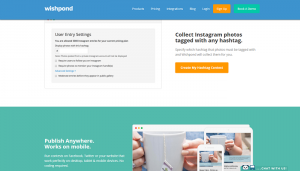The ISO 9001:2015 revision was released into the public domain on Tuesday, September 15, 2015. As part of the standard there is a three-year implementation period, which allows organizations aligned with the 2008 version to have surveillance audits against the 2008 standard, allowing up to September 2018 at maximum for the transition to compliance with the 2015 version to take place. Therefore, a lot of quality managers and representatives of organizations worldwide will be breathing a sigh of relief, given the time they have to digest, plan, and implement the changes that the 2015 revision brings. While having this grace period will seem like a benefit to many, we must assume that the prescribed changes will be a positive to all 9001-certified organizations, and the greater business community in general. So, given that, is there any real reason to wait until the 2018 deadline to implement the changes?
Early implementation – The benefits
In this previous article: ISO 9001 Update: The final draft of ISO 9001:2015 is released! we examined how the Draft International Standard changes affected the 2008 standard on the transition to 9001:2015. Now that we know for sure exactly how these changes are shaped, is there a real benefit in making the changes earlier rather than later?
- Effectiveness of the changes to your business: The scope of the changes are looked at in more detail elsewhere, but the general consensus in the ISO community is that the changes are extremely positive. “Context of the organization” and “leadership” are two of the most noticeable changes, and it is easy to see the benefits that both will make both to the QMS scope and performance in the case of the former, and the overall strategic ability of the organization to align the QMS and business objectives together to provide improved results. “Risk-Based Thinking,” which you can read more about in Methodology for ISO 9001 Risk Analysis, is another critical change, married to the identification of opportunities. Requiring the leaders of an organization to identify, tackle, and mitigate risk and identify opportunity can only be a positive and performance-enhancing action. In summary, why implement any of the above actions in three years if you can implement them now?
- Your reputation: Put quite simply, implement early and be the envy of your suppliers, customers, and competitors! Early implementation also shows diligence and can only help in tenders, bids, and existing business relationships, too.
- Exposure to potential non-conformity: Maintaining a QMS against two standards can be more costly and provide greater scope for error. Transition early and eliminate this.
- Integration of systems: With the changes to ISO 14001 coming at a similar time, implementing changes across your QMS and EMS (Environmental Management System) may be less costly and labor intensive than implementing them one at a time.
- Overall cost benefits: The one aspect that most top managers understand is cost. The less prescriptive and demanding document requirements of the new revision will save time. The improved business performance and identification of opportunity will increase growth. The identification, removal, and mitigation of risk will provide stability. Not maintaining a QMS against two standards will save labor, time, and money. Overall result: reduced costs, improved bottom line.
So, the arguments for early implementation are persuasive, but most of all they are performance enhancing and beneficial to the business’s bottom line.
Transition: Now or later?
We have looked at the argument for transitioning to ISO 9001:2015 as early as possible, but what are the arguments against? Speaking from the position of someone who will have to implement these changes across several organizations, I can see none. If you disregard the natural human emotion to resist change, then there is no reason to wait before implementing the changes. The ISO committee has taken advice from all sections of the business community in many countries, and many experts have provided input. The changes are all designed to improve your business, and its chances of survival, profitability, and growth. Embrace the changes, implement them, and see how ISO 9001:2015 can help your business to grow.
Use our free Gap Analysis Tool to measure your QMS versus ISO 9001:2015 requirements.
Business & Finance Articles on Business 2 Community(151)
Report Post


